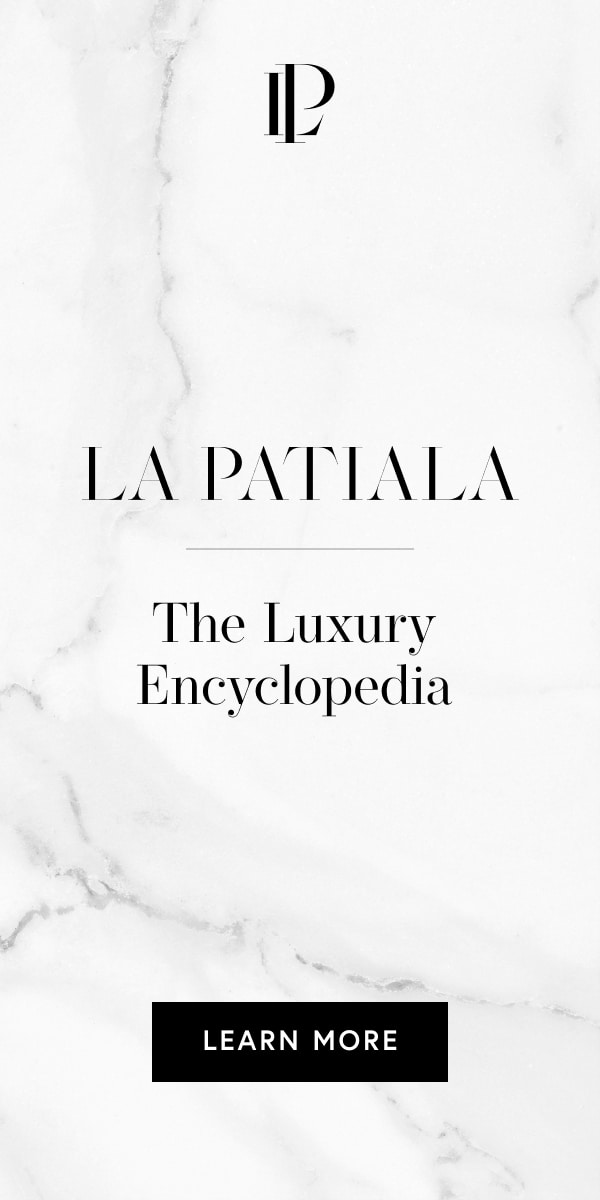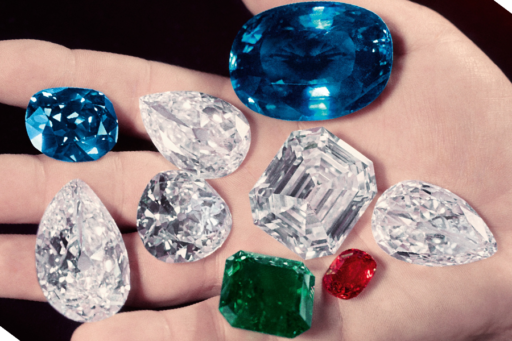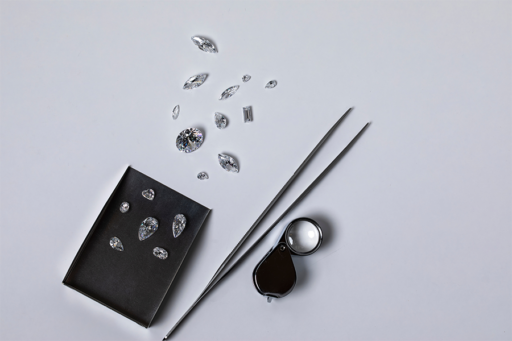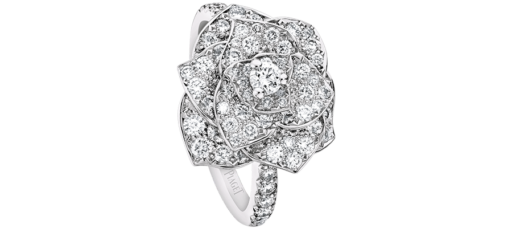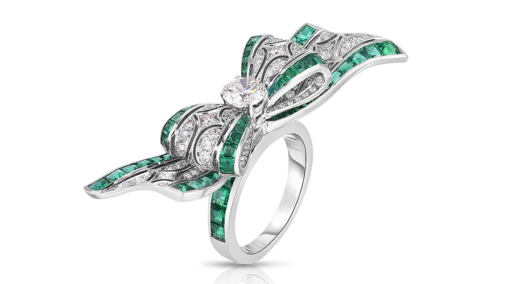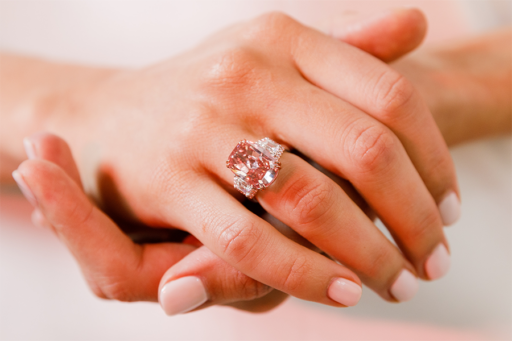The World’s Most Expensive Jewelry
From Marie Antoinette’s pearl and diamond pendant to Mouawad’s L’Incomparable Necklace, the world’s most expensive jewelry will dazzle you.
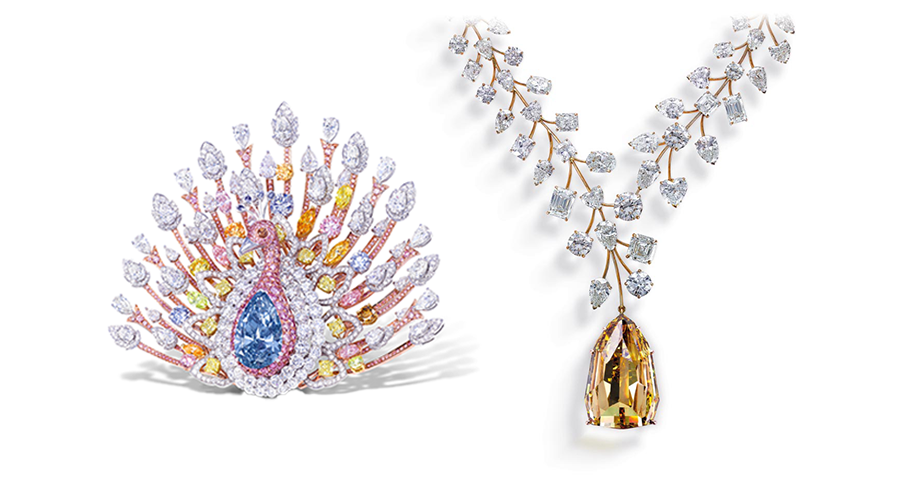
For centuries, jewelry has served as a symbol of wealth and status. Precious jewels have passed through the hands of countless royal families and socialites, adding cultural significance to their fine craftsmanship and rare materials. The most expensive jewelry in the world also includes some of the rarest and most coveted gemstones, such as fancy color diamonds in hues like red, green, pink, and blue. Discover the world’s most expensive jewelry and learn about the factors that contribute to their high value.
The Most Expensive Jewelry in the World
Crown Jewels
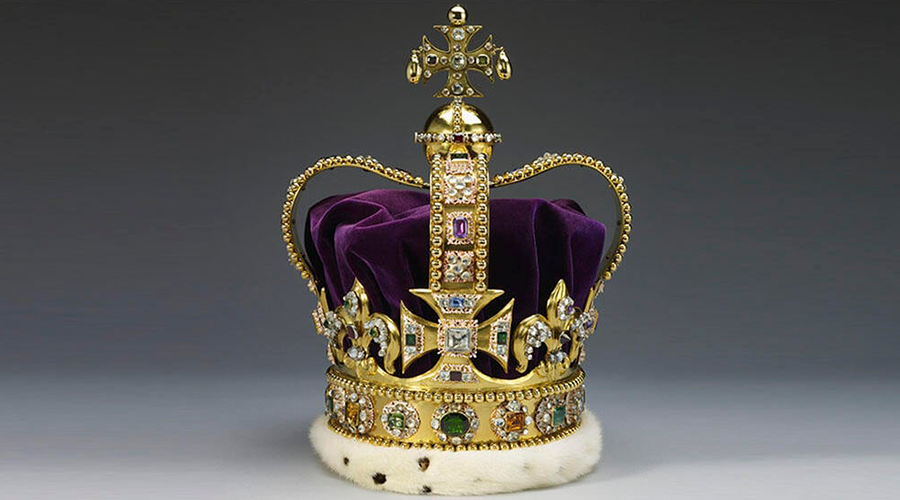
Crown jewels are virtually priceless because of their historical and cultural significance. They comprise pieces used in coronation ceremonies, as well as jewelry from a royal family’s private collection. Frequently, royal figures commissioned these pieces for specific events. Then, they added the jewelry to the royal collection and eventually bequeathed it to the next member in line for the throne. Until modern times, the finest gemstones often went to the ruler of the region they were found in, making their way into the royal collection. Legendary jewelers designed crown jewels using these rare gemstones and the finest materials in the world. Ultimately, what makes the jewels in these collections so expensive is that they’re owned by royalty.
Crown Jewels of the United Kingdom
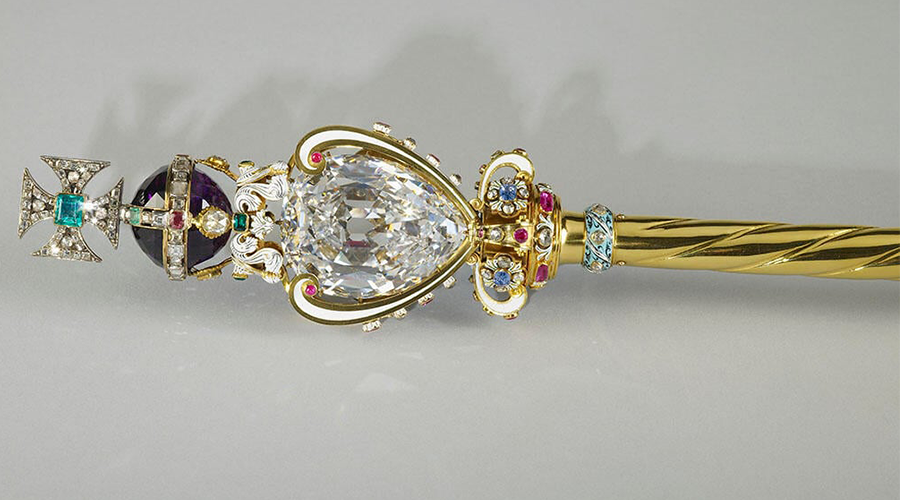
The Crown Jewels of the United Kingdom contain more than 100 pieces and 23,000 gemstones. These gemstones include diamonds cut from the Cullinan Diamond, the world’s biggest diamond, hailing from the Premier mine in South Africa. A main component of this royal collection is the Coronation Regalia, most recently used at the Coronation of King Charles III and Queen Camilla. The five pieces in the Coronation Regalia collectively symbolize the powers and responsibilities of the monarch, so their cultural and historical significance makes them invaluable. While the worth of the Sovereign’s Orb and Coronation Spoon is unknown, experts estimate that the Imperial State Crown is worth between $3.4 and $5.7 billion, St. Edward’s Crown is worth $57 million, and the Sovereign’s Sceptre with Cross is worth $400 million.
Tiaras are some of the most iconic crown jewels, but they aren’t always the most expensive. A more valuable piece in the larger collection of the Crown Jewels is Queen Elizabeth II’s Nizam of Hyderabad Necklace. In 1947, Hyderabad’s ruler, Asaf Jah VII, gifted it to Queen Elizabeth II for her engagement to Prince Philip. Cartier designed the necklace in the 1930s and set it with 50 diamonds in platinum. It is worth approximately $80 million, and Catherine, Princess of Wales, has worn it on numerous occasions. In contrast, the Cartier Halo Scroll Tiara she donned on her wedding day is worth only $1.5 million.
House of Grimaldi Jewels
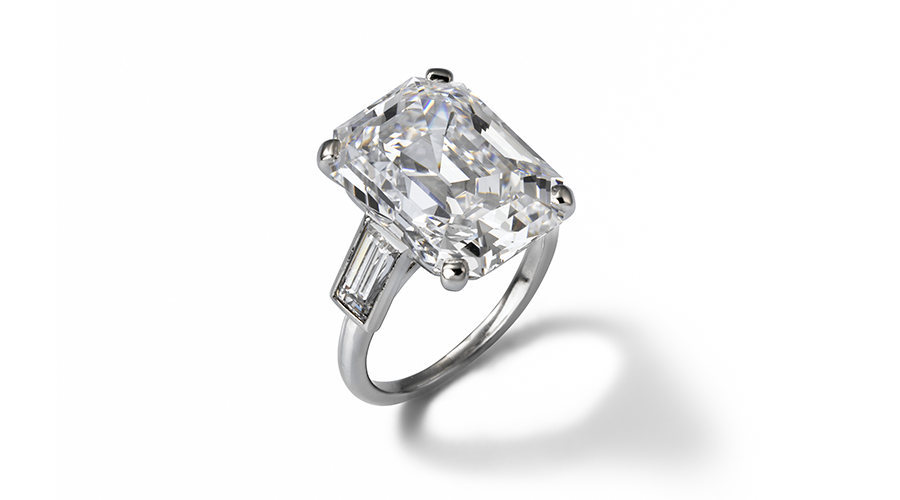
The jewelry collection of the House of Grimaldi, the royal family of Monaco, has many exquisite pieces, including tiaras, necklaces, and rings. One of the most valuable is the Diamond Pearl Drop Tiara, which Cartier designed for Princess Charlotte in 1949. She wore it at the wedding of her son, Prince Rainier III, to the famous actress Grace Kelly. For the wedding, a Monaco-based financial group called Société des Bains de Mer gifted Princess Grace with the Bains de Mer Tiara. Cartier also designed this tiara, using stunning diamonds and rubies to echo the red and white colors of Monaco’s flag.
Another notable piece in the Grimaldi collection is Princess Caroline’s Diamond Fringe necklace. Princess Caroline famously wore the Diamond Fringe necklace to the Rose Ball in 2015.
When Prince Rainier III of Monaco proposed to actress Grace Kelly, he presented her with a ring of diamonds and rubies from the crown jewels. Later, he commissioned Cartier to make this stunning 10.48-carat emerald-cut diamond ring for her to wear out. Although he paid $4 million for it in 1956, experts estimate that the ring is now worth $44.3 million — making it one of the world’s most expensive diamond rings.
Austrian Crown Jewels

The Austrian Crown Jewels include two key pieces: the Imperial Crown of the Holy Roman Empire and the Imperial Crown of Austria. The former was made in the late 10th century and features an octagonal shape, jewel embellishments, and Byzantine-style enamel. It was the crown used to coronate the King of the Romans, the title of the successor of the Holy Roman Emperor, elected by the German princes. The Imperial Crown of Austria is gold embellished with diamonds, rubies, spinels, sapphires, and pearls. In 1602, the Holy Roman Emperor Rudolf II commissioned the crown for himself, and in 1804, it became the official crown of the Austrian Empire. Emperor Rudolf II also commissioned the Imperial Orb and Sceptre as part of Austria’s coronation regalia. The exact value of the Austrian Crown Jewels is unknown. They are kept in the Imperial Treasury in the Hofburg Palace in Vienna.
Jewels with Notable Provenance
What are jewels with provenance? Simply put, they’re pieces of jewelry that someone important owned. Sometimes, this can increase the price, depending on the person’s notability. When you purchase a jewel with provenance, you’re acquiring not only a beautiful piece of jewelry but also a piece of history.
Queen Marie Antoinette’s Pearl and Diamond Pendant— $41 million
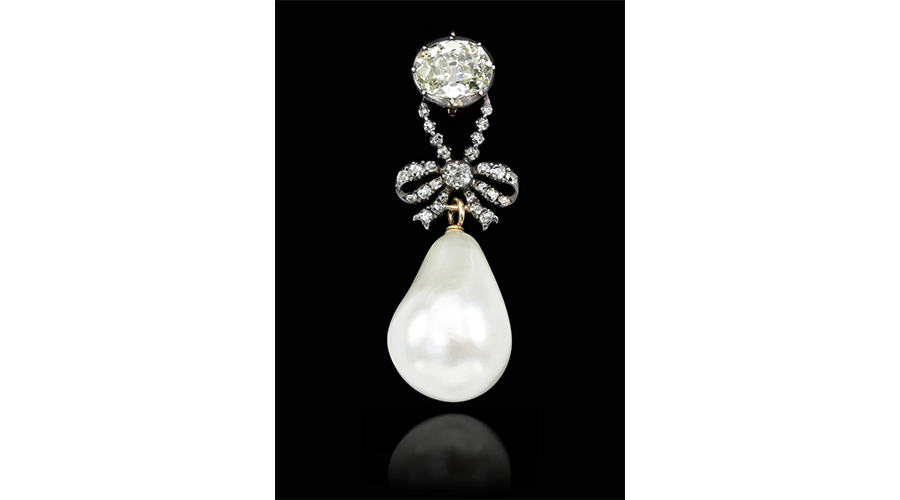
Queen Marie Antoinette’s 18th-century pearl and diamond pendant fetched $41 million at a Sotheby’s auction in 2018 in Geneva. Experts believe that the king and queen, Louis XVI and Marie Antoinette, packed it while preparing their escape from the Tuileries Palace on the night of its besiegement in 1791.
Queen Elizabeth II’s Williamson Pink Diamond Brooch — $28.7 million
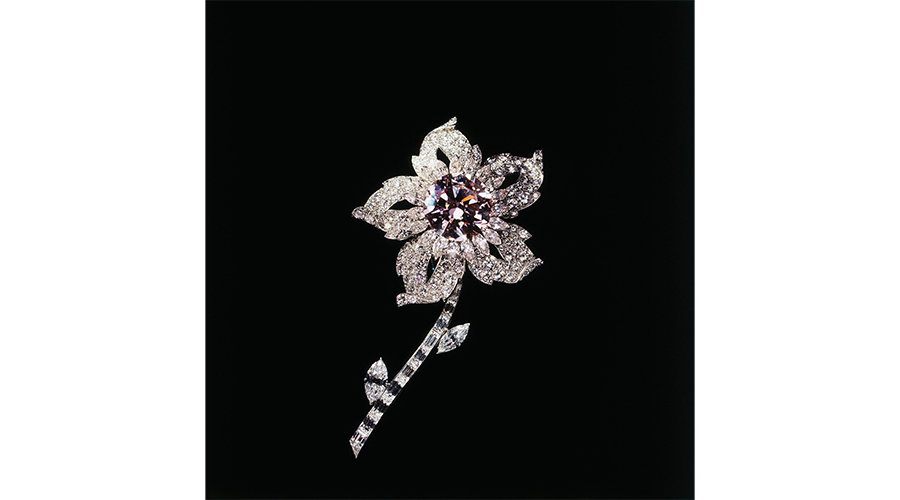
In 1947, Canadian geologist Dr. John Thoburn Williamson gave Queen Elizabeth II a 54.5-carat rough pink diamond as a wedding gift. After a two-month cutting process, the resulting 23.6-carat round brilliant-cut diamond was set into the Williamson Pink Diamond Brooch. Experts estimate that the brooch is worth $33.9 million.
High Jewelry
High jewelry is made of the best quality materials and is more artistic than fine jewelry, its mass-produced counterpart. It comprises one-of-a-kind or limited-production pieces, including high jewelry watches, that are handcrafted using the most advanced techniques and are only available to a select few. Walking the line between jewelry and art, high jewelers pull inspiration from nature, architecture, and different cultures. Because each piece is considered a work of art, its value can increase over time — unlike in the case of fine jewelry, which frequently loses value once it is sold. Independent jewelers and a handful of top luxury brands, such as Boucheron, Bulgari, Cartier, and Harry Winston, produce some of the world’s most exquisite high jewelry.
Graff’s Peacock Brooch — $100 million
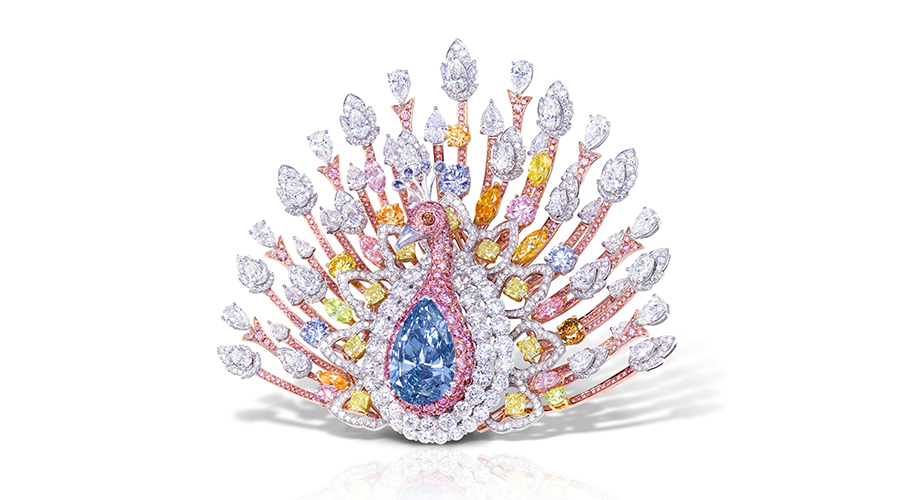
Graff’s Peacock Brooch contains 1,305 diamonds, including fancy color diamonds that total 120.8 carats in weight. The brooch features an extremely rare 20.02-carat pear-shaped fancy deep blue diamond that can be detached and worn separately. White and colored diamonds surround the central blue diamond, and white, blue, yellow, and orange diamonds adorn the peacock’s tail. Experts estimate that the brooch is worth $100 million.
Mouawad’s L’Incomparable Necklace — $55 million
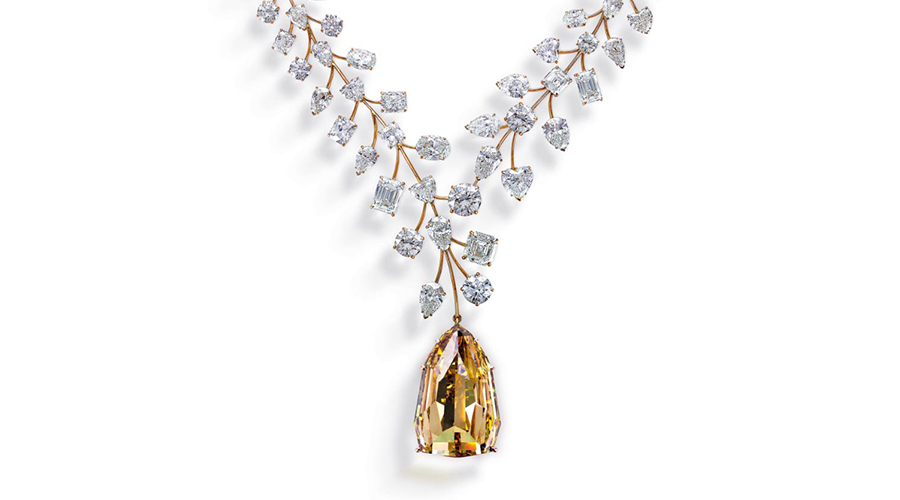
In 2013, Mouawad’s L’Incomparable Necklace set the world record for the most valuable necklace, worth $55 million. It featured a dazzling 407.48-carat yellow diamond at its center, the Incomparable Diamond. The gorgeous center stone was set in a tree branches-inspired 18K rose gold necklace with white diamonds that total 229.52 carats in weight. Later, this massive diamond was removed from the necklace and recut into the more brilliant 303-carat Golden Canary diamond. In 2022, Sotheby’s sold the Golden Canary diamond alone for $12.4 million.
Cartier’s Hutton-Mdivani Jadeite Necklace — $27.4 million
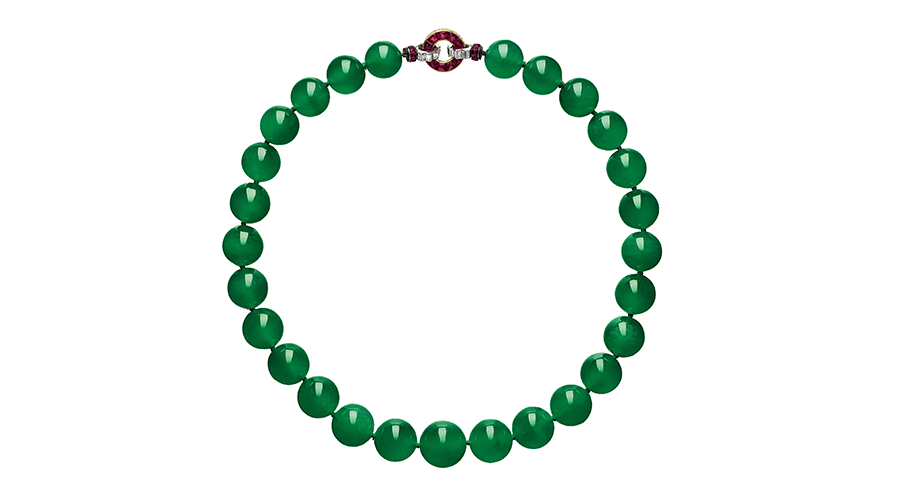
Cartier designed this jadeite, ruby, and diamond necklace in the 1930s for the American philanthropist and heiress Barbara Hutton. It later became part of the private collection of the Mdivanis, the Georgian royal family. The Cartier Collection purchased the necklace at a Sotheby’s auction in 2014 in Hong Kong for $27.4 million — more than double its estimated value. The necklace includes 27 jadeite beads in what Sotheby’s calls a “highly translucent bright emerald green color,” complete with a clasp made of caliber-cut rubies and baguette diamonds.
Rare Gemstones
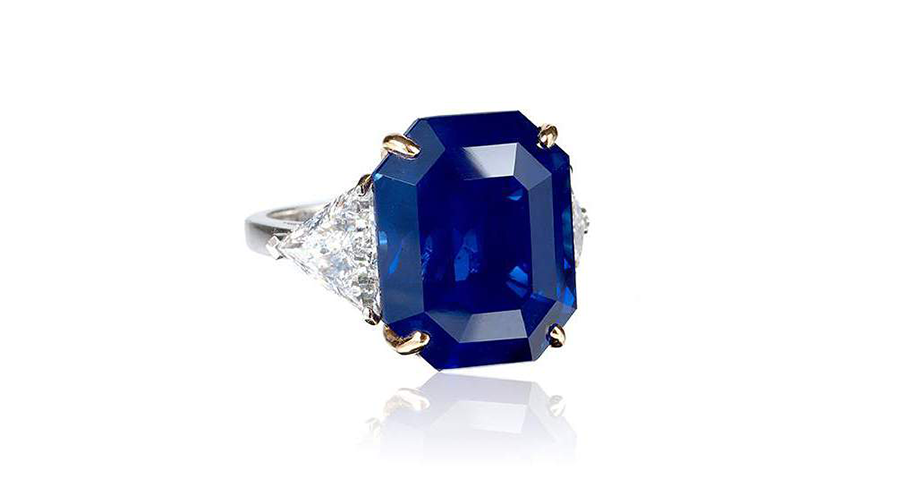
The factors that contribute to a gemstone’s rarity include color, the quantity in existence, and size. The more transparent a colorless diamond is, the higher it is in value. However, many are surprised to learn that fancy color diamonds are rarer and more expensive than colorless diamonds. One reason for this is that they are extremely hard to find. The same is also true for colored gemstones. Another characteristic of valuable rare gemstones is that they are large in size. Finding a high-quality large gemstone is difficult, so these natural marvels can command extremely high prices.
Colorless Diamonds
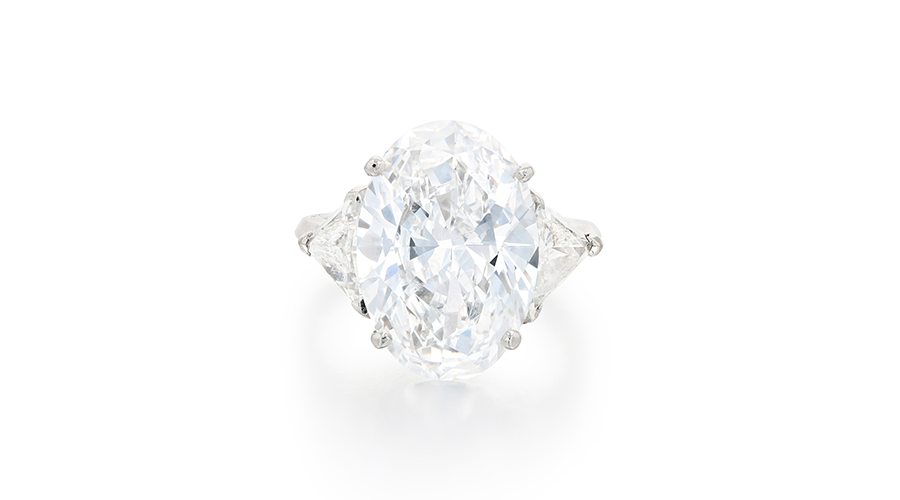
The finest colorless diamonds have the highest rating of color, cut, and clarity and are large in size. The most covetable combination is D color, Internally Flawless, Type IIa diamonds. D-color diamonds, the highest degree of colorless diamonds, are transparent even under intense magnification. Internally Flawless diamonds have no inclusions beneath their surface, and Type IIa diamonds are free of nitrogen and boron impurities. This combination is extremely hard to find, especially in large sizes, making these the most valuable colorless diamonds.
Fancy Color Diamonds
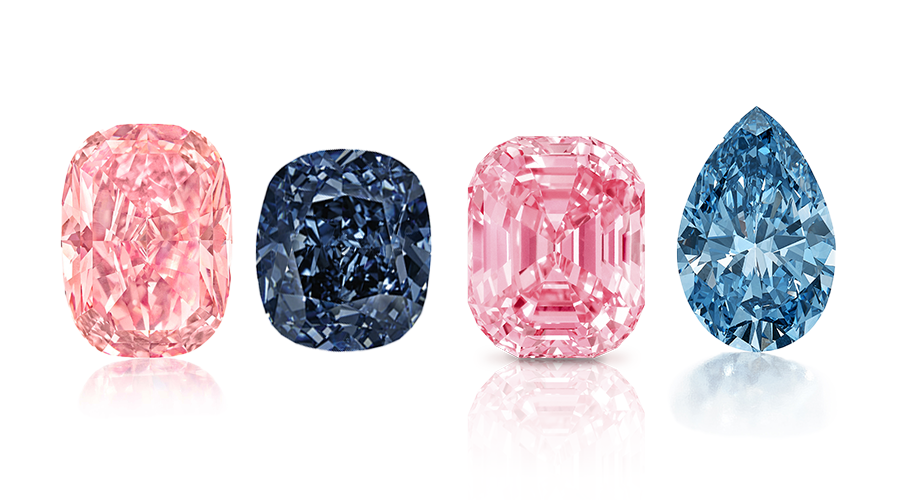
Fancy color diamonds come in a range of colors. The rarest colors are red, green, purple, and orange, then pink and blue. Yellow and brown diamonds are more common and therefore more affordable. The Gemological Institute of America (GIA) grades these diamonds on a scale of intensity of color, and the two highest color grades are Fancy Intense and Fancy Vivid. The deeper and more intense the color, the more rare and valuable a fancy color diamond is.
Red diamonds are the rarest, but pink and blue diamonds are the most coveted today because they are much larger than red diamonds, which are usually under 1 carat. Pink and blue diamonds are found in only a few mines and are, therefore, incredibly rare. In fact, the primary source of pink diamonds — the Argyle diamond mine in Western Australia — closed in 2020 because it couldn’t find enough diamonds to be profitable. That means fewer pink diamonds are being mined, making them rarer and more expensive as a result. Yellow diamonds, in contrast, are the most common colored diamonds and are relatively affordable.
The Big Three
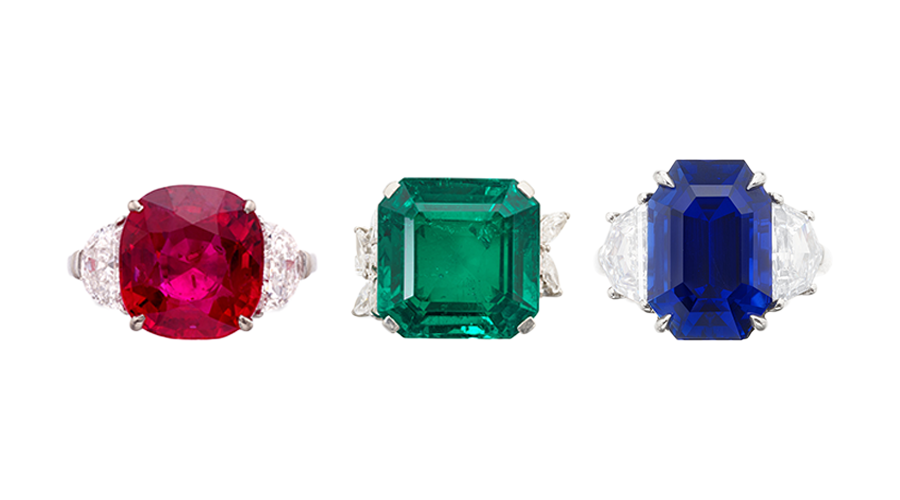
The Big Three is the trio of the most precious colored gemstones: ruby, emerald, and sapphire. The most valuable of these are Burmese “pigeon’s blood” rubies, Colombian emeralds, and Kashmir sapphires. Of course, there are very valuable rubies, emeralds, and sapphires from other sources. As the supply of gemstones from these three coveted provenances dwindles, prices rise for others. Bayco, a New York City-based jeweler who specializes in the finest colored gemstones, searches the world to find the best examples. Many auction houses are also sources of top-quality pieces of jewelry featuring the Big Three.
But what makes these provenances so covetable? “Top quality Kashmir sapphires are a true collector’s gem,” says Marco Bayco. “They are known for their velvety cornflower blue color and are extremely difficult to source in large carat weights. They were only mined for a short period of time in history, starting in the 1880s and ending in 1946, which makes them very scarce. In the gem trade, owning a Kashmir sapphire is a status symbol.” Ceylon sapphires are much more common than Kashmir sapphires and are also quite valuable. The pictured ring is from a Sotheby’s sale, and it features a 12.30-carat Ceylon sapphire with no heating and a royal blue color. Bayco’s Crown of Kashmir ring, above, has an unheated 24.07-carat emerald-cut Kashmir sapphire — a truly spectacular specimen.
Rare Colored Gemstones
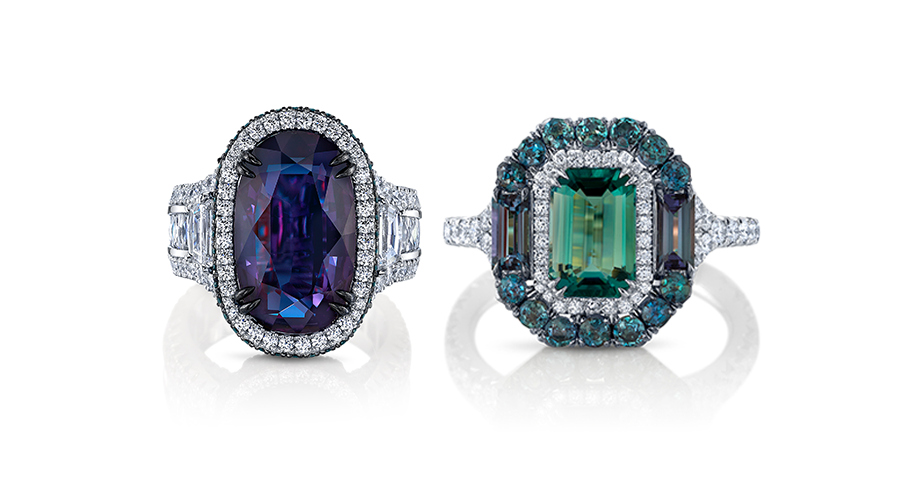
Outside the Big Three, alexandrite and grandidierite are exceptionally rare gemstones, and both have a color effect called trichroic pleochroism. This means that both gemstones can show three different colors, depending on the angle and the type of light.
Alexandrite is one of the most valuable gemstones in the world; it is rarer and sometimes more expensive than diamonds. Its color-changing appearance is quite dramatic. In daylight and fluorescent light, it looks like a vibrant green gemstone. At night or in incandescent light, it’s more of a purpleish-red. Technically, its three colors are green, orange, and purple-red, although most people refer to it as green or red.
Grandidierite is a mineral that is also very rare. Its color can appear in three ways: dark green, colorless, and dark blue-green. It was discovered in 1902 in Madagascar and has been produced in very small quantities since, so it is relatively unknown outside of the jewelry industry.
Famous Diamonds
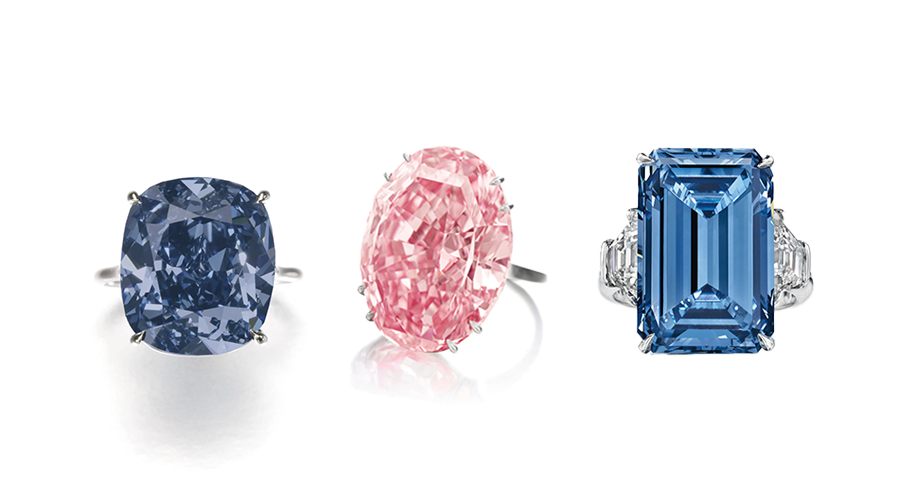
The most famous diamonds are miracles of nature. They are exceptionally large in size, they are rich in color, and they contain few to no flaws. They are also known for breaking auction records with skyrocketing sales.
The Hope Diamond — $350 million
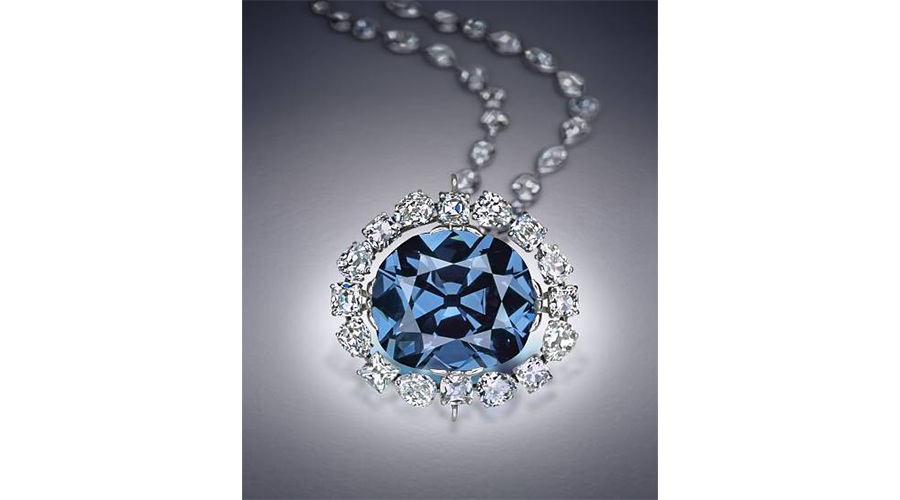
The Hope Diamond is a 45.52-carat fancy dark grayish-blue flawless Type IIb diamond. A French merchant purchased the originally 112-carat diamond from the Kollur mine in India and then sold it to King Louis XIV of France in 1668. The diamond was recut and reset through the years and stolen during a weeklong looting of the crown jewels in 1792 amidst the French Revolution. The diamond passed through several hands, and ultimately, Harry Winston acquired it in 1949 as part of a larger collection he purchased. After 10 years of showings, Harry Winston donated the diamond to the Smithsonian Institution.
Wittelsbach-Graff — $80 million
Also originating from the Kollur mine, the Wittelsbach-Graff is a 31.06-carat fancy deep grayish-blue internally flawless Type IIb diamond. Laurence Graff purchased the originally 35.56-carat diamond in 2008 for approximately $23.4 million and later recut it to 31.06 carats to improve its clarity. He sold the rare diamond in 2011 to a former emir of Qatar for $80 million.
Pink Star — $71.2 million
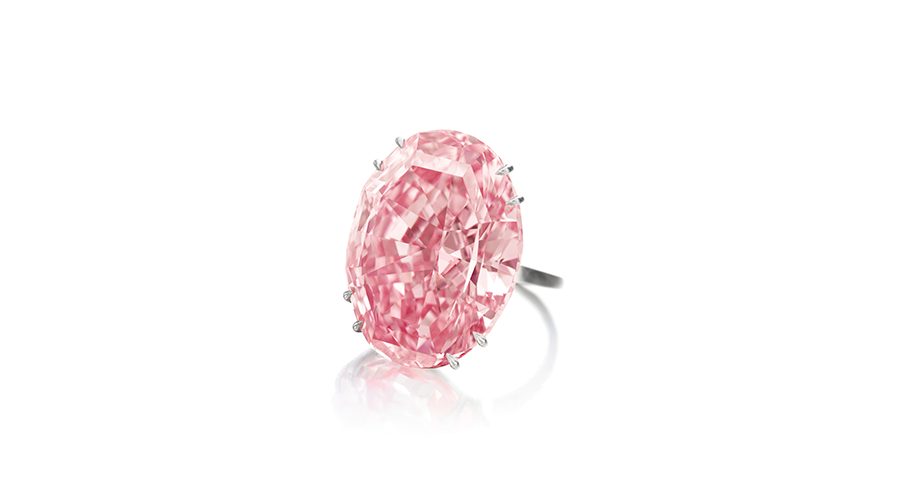
The Pink Star is a 59.60-carat fancy vivid pink internally flawless Type IIa diamond. It is the central diamond of one of the world’s most expensive rings, fetching $71.2 million at a Sotheby’s auction in Hong Kong in April 2017.
Oppenheimer Blue— $57.5 million
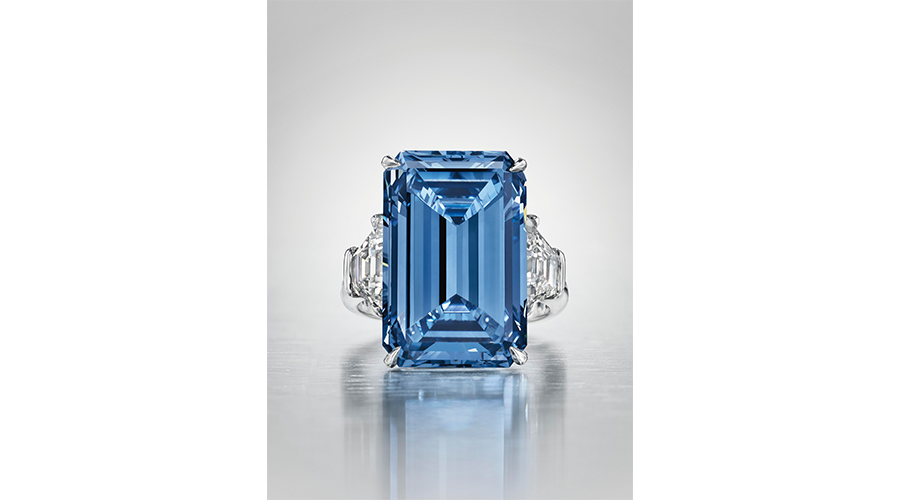
The Oppenheimer Blue is a 14.62-carat fancy vivid blue internally flawless Type IIb diamond. It sold as a ring for $57.5 million at a Christie’s auction in Geneva in May 2016 — the largest fancy vivid blue diamond to sell at auction at the time.
Memory of Autumn Leaves Earrings — $57.4 million
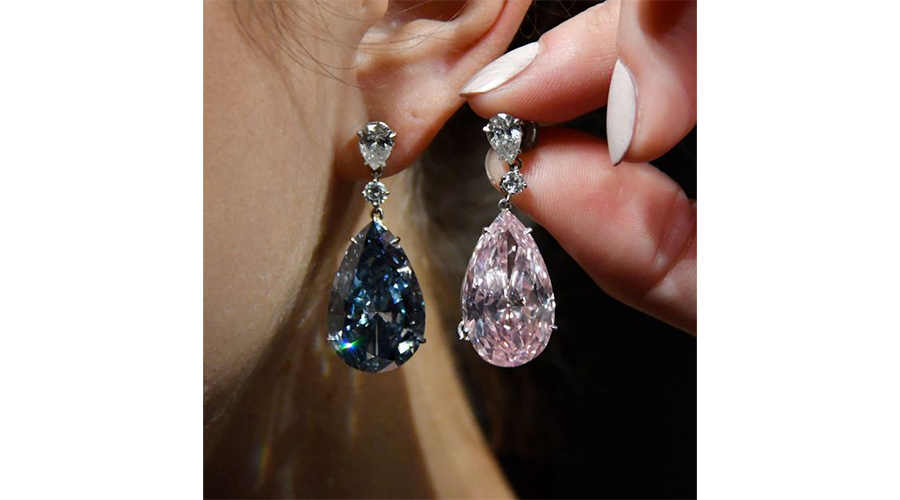
The Memory of Autumn Leaves Earrings include a 14.54-carat fancy vivid blue Type IIb diamond and a 16-carat fancy intense pink Type IIa diamond originally called Apollo and Artemis. Because of the diamonds’ exceptional size and quality, the rare earrings were listed separately but ultimately sold together at a Sotheby’s auction in 2017 in Geneva for $57.4 million. This set the world record for the most valuable earrings at auction.
Winston Pink Legacy— $49.9 million
The Winston Pink Legacy is an 18.96-carat fancy vivid pink internally flawless Type IIa diamond. Harry Winston purchased it for $49.9 million at a Christie’s auction in Geneva in 2018, and later incorporated the diamond into a beautiful ring.
Blue Moon of Josephine — $48.4 million
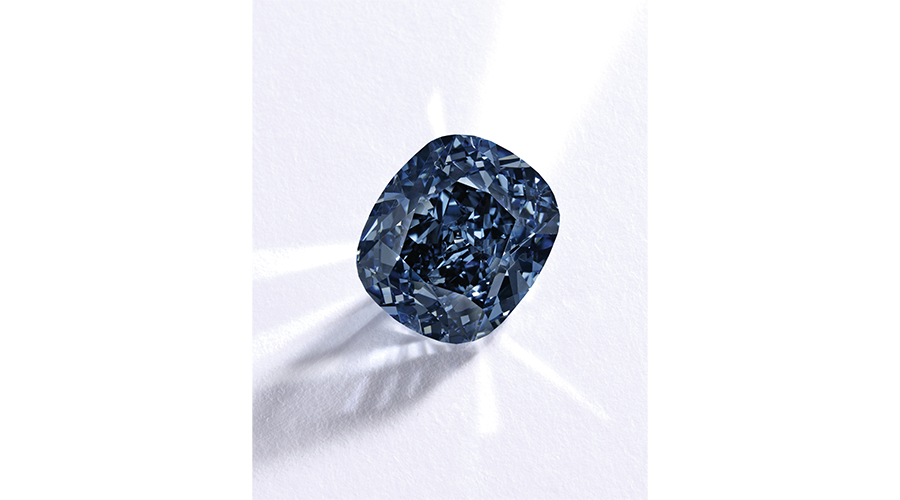
The Blue Moon of Josephine is a 12.03-carat fancy vivid blue internally flawless Type IIb diamond. A Hong Kong businessman purchased it at a Sotheby’s auction for $48.4 million in November 2015. It was originally named Blue Moon, but he renamed it after his seven-year-old daughter.
Graff Pink — $46.2 million
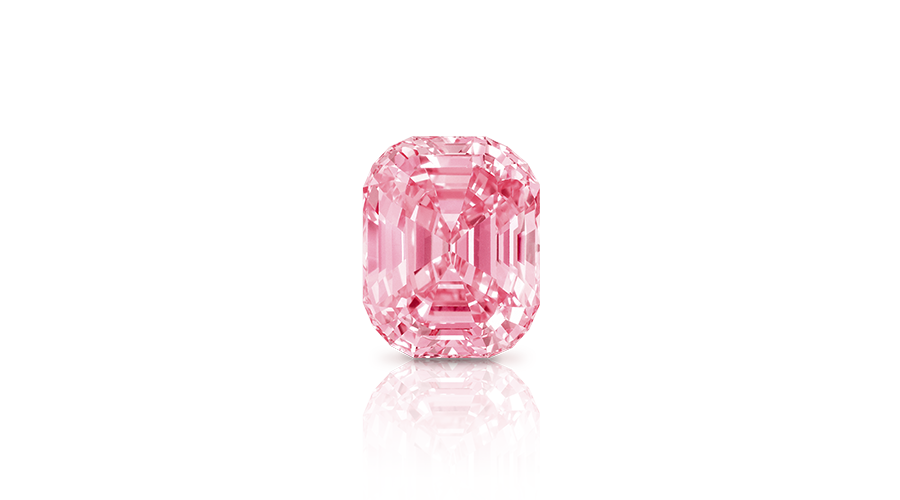
The Graff Pink is a 23.88-carat fancy vivid pink internally flawless Type IIa diamond. Laurence Graff purchased the diamond for $46.16 million at a Sotheby’s auction in November 2010. The diamond originally weighed 24.78 carats, but Graff recut it to remove its 25 inclusions. It is currently set in a platinum ring with two colorless shield-shaped diamonds.

